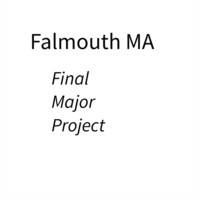Phil Rylance Creative Art Director, JWT
Originally from Warrington Lancashire (now Cheshire), Phil Rylance attended Secondary Technical school, a peculiar Northern experiment, then a foundation year at Warrington Art School before moving on to the BA Hons Graphic Design course in Liverpool. He began a successful career in advertising after moving to London and has achieved the highest honours worldwide for his creativity, He has produced many campaigns including the much lauded Creature Comforts commercials and at one point was personally responsible for making Le Coq Sportif the biggest selling poster range at the Athena stores. Ideas are his passion, and most importantly – experience has taught him that idea led content never seems to go out of fashion.
Phil’s talk focused on his part of the creative process and how that relates to the role of the photographer. He started his presentation by describing his views on the creative process. To work in advertising you need to have curiosity and creativity in equal measures which needs to be discovered and developed over time. To understand the subject that is part of the campaign speaking to experts in the field can provide useful insights that can be incorporated into the creative process. Creative will form working groups that create the concepts that will be submitted to the Creative Director for approval.
Phil stated there are three key rules to successfully shooting a campaign.
- Rule 1: Shoot the layout
- Rule 2: See Rule 1
- Rule 3: See Rule 2
If as a photographer you have better ideas than the proposed layout only suggest those ideas once the layout has been successfully shoot as the layout is the proposal that was approved by all parties prior to going on set.
Phil provided the group with a number of stories from his times of going on set. One story was a shoot with Peter Turnley for a Coca Cola campaign where they travelled around Paris looking for people drinking Coca Cola. The Producer travelled with a bag of Dollar Bills to pay each person $100 dollars for the image and to get a model release form signed. During that specific shoot they shoot 82,000 images.
He described a shoot with Land Rover where they took a new model into the studio and then shoot the vehicle from every possible angle to determine the best possible angles for shooting the car on location. Though typically cars look good from the front and rear 3 quarters which is why so many car images are shoot from those positions. Most car images are heavy in terms of compositing to get the car light perfectly. In car advertising today they is heavy use of CGI however that can still go wrong because cars get light from multiple angles and there is no longer a coherent light source.
The next story was about a Land Rover shoot in Namibia where the images contained a Freelander and a Cheetah the images were created in-camera to as it was the best way to achieve continuity.
When approaching agents recognise agents start of by following them on social media if they have a social media presence as it gives insight into the type of work they are producing. There is a hierarchy of agents who work for different levels of clients.
If you want to pitch work to art buyers and agents build up bodies of work that relate to products where you have an interest.
- Shoot a series of images for the product (i.e. 3 images)
- If you have never shoot a car before get a car assistant to help you on a shoot
- If you have never shoot fashion before then get a stylist to help you
Reflection: The key takeaways from Phil’s talk are the need to shoot what has previously agreed with the creatives and the art buyer even though you might realise on the shoot that a better outcome is possible. Once the layout is in the can then suggest alternative strategies if time permits. The other key message was as a photographer you are there to create better images than the ones that are available from stock agencies.



